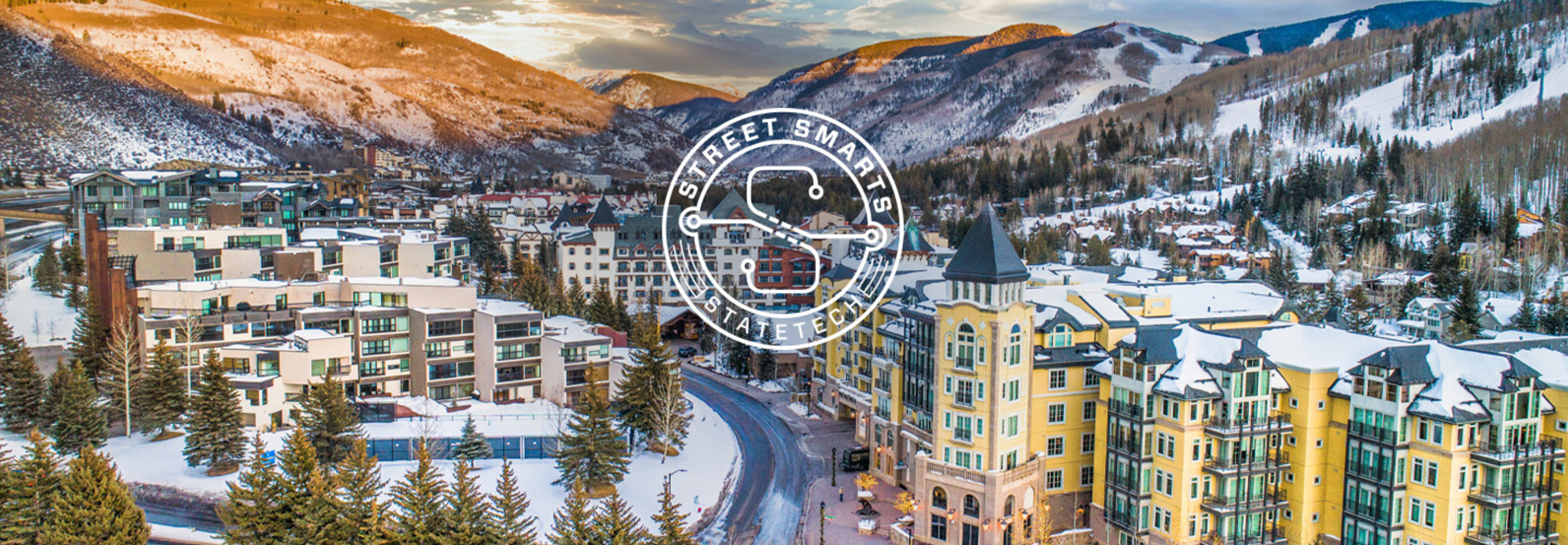A Strong Framework Provides a Foundation for Smart Functionality
Vail’s technology is supported by its underground fiber backbone; its Wi-Fi network components include Ruckus ZoneFlex access points and cloud-based Virtual SmartZone High Scale controllers, which offer redundancy if a hardware failure were to occur.
In addition to the free public Wi-Fi network, which covers approximately 10 square miles, Johnson says a separate network transmits data that relates to municipal functions, such as automated fountain controls and public safety surveillance efforts involving Axis Communications megapixel cameras and video monitoring software from Milestone Systems.
Wireless carriers Verizon and T-Mobile also use dedicated strands of fiber in the conduit and antennas they’ve added to Vail’s cellular node network over the years to provide consumer service to the area.
“We reuse the same infrastructure to run numerous municipal Internet of Things devices around the town,” Johnson says. “Our irrigation systems are run off that. We’ve got a pretty robust camera system; some of those feed through that wireless network.”
Connectivity can be an issue throughout the state due to its geography, according to Colorado Smart Cities Alliance Executive Director Tyler Svitak, who is also a former Colorado Department of Transportation employee. He says mountain corridors are one of the department’s primary challenges.
“The area around Vail actually is one of the biggest connectivity gaps for CDOT,” Svitak says. “A lot of the things they might use to monitor avalanches or road conditions aren’t reliable. That is a big barrier, and outside of mountainous corridors, there’s a lot of bandwidth and latency issues for some of the communities that don’t have access to their own fiber networks.”
RELATED: How will 5G networks enhance smart city solutions?
Town’s Network Equipment Fills Potential Transmission Gaps
Vail’s infrastructure, however, supports a number of smart tech-enabled services, including the RideVail Transit intelligent system it unveiled in November, which allows residents and visitors to view the location and current capacity level of buses through the ride.vailgov.com website.
Cradlepoint wireless edge routers on each bus transmit location-based data and provide Wi-Fi access for passengers using an SD-WAN architecture. The city also uses operations management software to assist with dispatching vehicles and collecting time-related route performance and other data that can potentially help inform planning decisions.
Vail hopes to add QR codes at bus stops that riders can scan with their phone cameras to easily access the system’s website.
“As long as you have your phone’s location services enabled, it can tell you where you are and when the bus next bus is coming,” Johnson says. “For real-time information, there’s no better way to go.”












